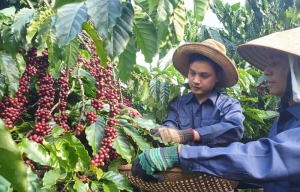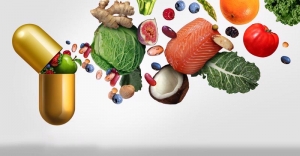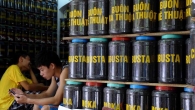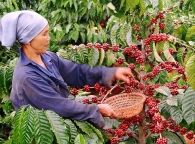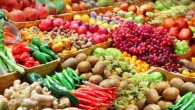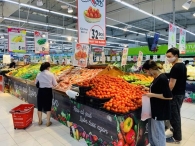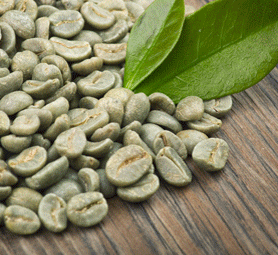The Ministry of Agriculture and Rural Development (MARD) is conducting a pilot project developing five areas of agricultural raw materials, with an area of 160,000 ha and total capital of more than VND1.5 trillion ($65.64 million). The formation of large raw material areas will make the agricultural sector more attractive to investors, and at the same time address fragmented production and lack of links.
With 89% of Vietnam's agricultural products being exported in raw form, unprocessed, the room for businesses to invest in the agricultural industry is huge.
The Ministry of Agriculture and Rural Development is rushing to develop a pilot project to develop five agricultural raw material zones across the country, with a total area of about 160,000 hectares. According to the plan for the fourth quarter of 2021, the project will be implemented and piloted for 5 years.
EVERY INGREDIENT OF MATERIAL WILL HAVE A DIFFERENT PROJECT Mr. Le Duc Thinh, Director of the Department of Economic Cooperation and Rural Development, said: "The project of developing raw material areas for processing and consuming agro-forestry products in the 2021-2025 period" has been approved by the Ministry of Agriculture and Rural Development. and Rural Development approved the policy and are integrating more components on agricultural extension, agricultural insurance and credit.
The project has a total capital of more than 1,500 billion VND, with the goal of creating 5 specialized farming material areas on a total area of about 160,000 hectares. Accordingly, the project will build up to 14,000 hectares of raw materials for the development of passion fruit, pineapple and mango in Son La and Hoa Binh provinces.
The Central Coast region, in the provinces of Quang Tri, Thua Thien - Hue, will build a specialized farming area of 22,900 ha, and develop plantation timber. The coffee-growing area is expected to be established on an area of 11,200 ha in Gia Lai and Dak Lak provinces. The Long Xuyen Quadrangle, in the provinces of Kien Giang and An Giang, will develop a rice-growing area with an area of 50,000 hectares.
Dong Thap Muoi region, belonging to Dong Thap, Tien Giang and Long An provinces, with an area of 60,200 ha, develops fruit trees. The crops selected for pilot development into raw material areas are all key agricultural products of the country, with an export value of billions of USD per year, requiring intensive investment and quality farming. high, to meet export demand. Each material area corresponds to a separate project, suitable to the characteristics of each region with each type of material. A remarkable point is that 5 large raw material areas in the project will be the pilot places to apply many new policies such as the policy of chain credit lending, agricultural insurance... to encourage businesses to invest .
The Ministry of Agriculture and Rural Development will coordinate with localities to build infrastructure, including roads, irrigation systems, cold storage systems, preliminary processing houses, etc. in 5 raw material areas. Farmers contribute their labor and land. Businesses will initially play a key role in leading the value chain of agricultural products, committing to product consumption, and investing in production materials.
To develop the projects, the Department of Economic Cooperation and Rural Development has sent the outlines to 11 related provinces. The content of the project consists of 5 main components: Investment in infrastructure linking raw material areas; Consolidate and improve the capacity of cooperatives and members; Agricultural extension, science and technology transfer; Applying information technology to manage raw material areas in connection with traceability; Piloting and implementing the application of mechanisms and policies to encourage and support the development of raw material areas for association.
As for the infrastructure component of the raw material area, which is identified as the focus, the Ministry of Agriculture and Rural Development will support 440 billion VND from the medium-term public investment capital 2021-2025. When deployed, the component will improve 132 km of roads for agricultural production, upgrade the irrigation system for more than 4,000 hectares of rice and fruit trees. On the local side, the provinces committed to allocate 347.9 billion dong of reciprocal capital to dredge 31.5 km of canals and support equipment and machinery for the cooperative. Enterprises and cooperatives also promised 40.6 billion dong of counterpart capital and 20.8 billion dong of credit loans.
Mr. Le Duc Thinh said that from the first half of 2021, the Department of Economic Cooperation and Rural Development has organized fact-finding delegations on the prospects of the models. Initially, 10/11 provinces approved and sent the official project. When put into practice, 17 enterprises processing and consuming agricultural products, 250 cooperatives and 185,000 farmer households will directly benefit from the project.
CHANGING THINKING AND ACCESSORIES According to Mr. Tran Cong Thang, Director of the Institute of Policy and Strategy for Agriculture and Rural Development, the proportion of investment capital from the state budget for the project is currently more than 30%, which is too high. In specialized cultivation areas, it is necessary to deploy the granting of planting area codes for the entire planned area, and at the same time promote digitization from the management of planting area codes to the application of electronic agricultural extension.
Mr. Nguyen Quoc Oanh, Rector of the School of Agricultural Management, recommended that a large-scale raw material area should be selected for the Ministry to focus on directing, piloting, and finding bottlenecks through production practice. "We mobilize people to build specialized farming material areas, then we have to show them the benefits and why we need to do it. Which ones give early and practical results such as agricultural extension, post-harvest technology, etc.
The agricultural sector needs to be promoted. Mr. Le Minh Hoan, Minister of Agriculture and Rural Development. "In order to develop the concentrated raw material area methodically, it is necessary to change the lending policy from the Bank for Social Policies. Instead of prioritizing
Deputy Prime Minister Vu Duc Dam has assigned the Ministry of Health to issue national technical regulations on limits on restricted and banned substances in food in accordance with the requirements of importing countries.
The document states, considering the report of the Ministry of Industry and Trade on the results of inspection and verification of information about Hao Hao instant noodles products of Acecook Vietnam Joint Stock Company contaminated with Ethylene Oxide and recalled in some European countries. In Europe, the Deputy Prime Minister assigned the Ministry of Health, based on the provisions of Article 62 of the Law on Food Safety, to urgently review and issue national technical regulations on criteria and limits of Ethylene Oxide to ensure safety for human consumption. with food products.
In addition, the Ministry of Health will assume the prime responsibility for, and coordinate with the ministries of Agriculture and Rural Development, Industry and Trade in reviewing, updating and widely informing about requirements and limits of substances restricted from use and quality. banned... in food products in accordance with the requirements of the importing countries.
The Ministry of Industry and Trade continues to check and clarify the cause of Acecook Vietnam Joint Stock Company's Hao Hao noodle product contaminated with Ethylene Oxide in order to have appropriate treatment solutions to avoid similar cases. Previously, implementing the Government's working regulations, the Government Office sent a written request to the Ministry of Industry and Trade to check the press's reports that the Hao Hao instant noodle product of Acecook Vietnam Joint Stock Company has banned substances, have a written report to the Prime Minister before September 7, 2021. ACECOOK TEMPORARILY STOP EXPORTING TO EU MARKET Information related to two batches of export products of Acecook Vietnam Joint Stock Company (Good vermicelli with pork rib flavor, 56gr, production date 10/5/2021 and Hao Hao noodles, spicy shrimp flavor, type). 77gr, production date March 24, 2021, is recalled in the EU.
"In the immediate future, Acecook Vietnam decided to suspend exports to the EU market, and at the same time discussed with distributors in EU countries about stopping exporting to the market for products that still do not meet EU standards. about this 2-CE." Representative of Acecook Vietnam.
Acecook Vietnam has verified and clarified the warning content of RASFF, EO standards of EU countries as well as urgently conducted a review of the entire production process, and sent some products for testing. Export and domestic at Eurofins Analysis Center (Scientific group in the field of food testing, with a network of more than 1000 independent companies in more than 50 countries and operating more than 900 laboratories). According to the test results of Eurofins Analytical Center, the domestic product Hao Hao hot and sour shrimp does not contain Ethylene Oxide (EO) and has the presence of a very small amount of 2-chloroethanol (2-CE) with a high concentration of 1.17 ppm. Acecook Vietnam affirms that Hao Hao domestic hot and sour shrimp products have guaranteed quality and fully comply with Vietnamese laws.
At the same time, this 2-CE content is much lower than the standards of the US (940 ppm), Canada (940 ppm) and some other countries. Acecook Vietnam representative, said: The reason Acecook export products were recalled in the EU is due to the presence of 2-CE substance. Due to the unique regulation of the European Union (EU) on how to calculate the content of EO as the combined value of both EO and 2-CE, the presence of 2-CE substance is considered by the EU to be inappropriate. accordance with their regulations. Moreover, the cause of the appearance of 2-CE in the product, according to the initial verification of Acecook Vietnam, there was a supplier using EO to disinfect some materials. In addition, the supplier's raw material analysis also detected the presence of some 2-CE.
Therefore, Acecook Vietnam believes that this may be a reason for the EU's assessment that the company's products are not in accordance with their regulations. “We need more time to fully verify, thoroughly research to clarify the cause. For the case in the European Union (EU) market, we will also strictly carry out the responsibility of the manufacturer and coordinate with the distributor to conduct the recall work at the request of the authorities. authorities in the countries where the incident occurred.
And during this time, in the short term, we decided to suspend exports to the EU market, and at the same time discuss with distributors in EU countries about stopping exporting to the market for products that have not yet been exported to the EU market. meet EU standards for this 2-CE substance,” added the representative of Acecook Vietnam.
As a Japanese enterprise and nearly 30 years of business and production in Vietnam, Acecook Vietnam affirms that the product "Hao Hao spicy and sour shrimp" and other products of Acecook Vietnam are being consumed in the market. The domestic market completely meets the standards in accordance with the laws of Vietnam, ensuring the health and safety of consumers.
Social distancing around Vietnam has limited the supply of coffee in the international market, resulting in prices remaining “relatively high” into 2022.
Recently, CNBC news agency cited a forecast of Fitch Solutions about the world coffee price situation and mentioned Vietnam with the advantage of being the second largest coffee exporter in the world. According to customs data, in August, Vietnam's coffee exports decreased by 8.7% compared to July, to 111,697 tons. In the first 8 months of the year, Vietnam exported 1.1 million tons of coffee, down 6.4% over the same period last year, but the turnover increased 2%, reaching about 2 billion USD.
Falling coffee exports from Vietnam and falling output in other leading coffee producing countries have pushed up world coffee prices sharply. Prices for arabica coffee futures are up about 45.8% this year, while robusta prices are up 52.2%, according to data from Refinitiv.
Brazil, the world's largest coffee exporter, has experienced extreme weather events that have damaged coffee farms. Bad weather also reduces coffee production in Colombia. “Additionally, we expect that, at least in the US and Europe, demand will increase in the coming months as the lifting of anti-Covid restrictions allows coffee shops to reopen,” the report said. of Fitch Solutions commented.
The consulting firm raised its forecast for the average price of arabica coffee in 2021 from $1.35/pound to $1.60/lb. The forecast for the average price of arabica coffee in 2022 is raised from 1.25 USD/pound to 1.5 USD/pound.
Fitch Solutions believes that anti-Covid restrictions in Vietnam will be eased gradually, so the interruption of Vietnam's coffee exports may only be a temporary issue. Besides, Brazil's coffee production is likely to recover "quite quickly" as long as extreme weather does not return. This means that the global supply of coffee could start to increase again in the 2022-2023 crop year, with the average price of arabica coffee in 2023 possibly falling to 1.2 USD/pound – Fitch Solutions forecasts . “The ongoing government support measures will help improve coffee production in many of the key coffee producing countries in Latin America and Asia, including Colombia and Vietnam,” the report reads. “Additionally, growth in demand for coffee is likely to peak in many of the largest coffee consuming countries, such as Europe and Japan.”
The average export price of Vietnamese coffee reached $2,012 per ton in August, the highest level since November 2018.
In the first eight months of 2021, Vietnam's average coffee export price reached 1,864 USD/ton, an increase of 8.9% compared to the first 8 months of 2020. In which, the average export price of Vietnam's coffee to Vietnam. most markets rose, except China. However, the Import-Export Department (Ministry of Industry and Trade) said that the complicated development of the Covid-19 wave had negatively affected Vietnam's coffee exports in August 2021. Statistics from the General Department of Customs show that Vietnam's coffee exports in August 2021 decreased for the 5th consecutive month, reaching 111.7 thousand tons, worth $224.75 million, down 8.7 % in volume and 4.4% in value compared to July 2021. But compared to August 2020, an increase of 11.5% in volume and 22% in value.
In the first 8 months of 2021, Vietnam's coffee exports reached 1.08 million tons, worth over 2 billion USD, down 4.4% in volume, but up 2% in value over the same period in 2020.
Regarding export markets, Vietnam's coffee exports to most of the main markets increased, except for the United States, Spain, Belgium, and the Philippines. Generally, in the first 8 months of 2021, coffee exports to many key markets decreased, except for Japan, Russia, and China. Particularly for the US market, in the first 7 months of 2021, the US reduced coffee imports from Colombia and Vietnam. Statistics from the International Trade Center show that US coffee imports from Vietnam in the first seven months of 2021 reached 76.47 thousand tons, worth $147.36 million, down 28.4% in value. volume and decreased by 27.2% in value compared to the first 7 months of 2020.
Vietnam's coffee market share in total US imports also fell from 11.31% in the first 7 months of 2020 to 8.17% in the 7 months of 2021. The Import-Export Department added that the above price increase was also recorded at the port of Ho Chi Minh City, Robusta coffee for export grade 2, 5% black broken rate, traded at the price of 2,161 USD/ton, the difference. +24 USD/ton, up 4 USD/ton (equivalent to an increase of 0.2%) compared to September 8, 2021.
Forecasting in the short term, robusta coffee prices fluctuate in an uptrend, but the increase is not large. The supply of coffee from Southeast Asia has not improved, but concerns about the global economic slowdown and very low trading volume will restrain the price increase of this commodity. In the mid-September, 2021, the price of robusta coffee in the domestic market continued to increase according to the world price, the increase slowed down. On September 18, 2021, the domestic price of robusta coffee increased from 200 VND/kg (equivalent to an increase of 0.5%) compared to September 8, 2021, to 39,600 - 40,500 VND/kg.
Cambodian exports to Vietnam reached $3.5 billion in the first eight months of 2021, up 423 per cent over the same period of 2020 and resulting in Vietnam posting a trade deficit with its neighbor of $355 million.
According to statistics of the General Department of Vietnam Customs, in the first eight months of 2021, the import and export turnover of goods between Vietnam and Cambodia reached US$6.653 billion, up 97.2% over the same period in 2020. Expected 2021 , import-export turnover between the two countries reached nearly 9 billion USD.
In which, Vietnam's exports to Cambodia reached 3,149 billion USD, up 16.5% and Cambodia's goods exported to Vietnam reached 3,504 billion USD, up 423% over the same period in 2020. Thus, in the first 8 months of 2021, Vietnam had a trade deficit of 355 million USD from Cambodia, mainly 2 agricultural products such as cashew nut with 1.829 billion USD, rubber 823 million USD for processing and manufacturing raw materials for export. export. Regarding the group of goods exported to Cambodia, in the first 8 months of 2021, there were 21/29 groups of products with positive growth compared to the first 8 months of 2020.
Typically, vegetables and fruits reached 13.79 million USD, up 186.17%; animal feed and raw materials reached $102.42 million, up 29.45%; petrol and oil of all kinds reached USD 253.79 million, up 51.37%; chemicals reached USD 28.02 million, up 57.84%; fertilizers of all kinds reached USD 133.83 million, up 65.95%; plastic raw materials reached 18.11 million USD, up 45.98%; wood and wood products reached 14.52 million USD, up 42.93%; fibers of all kinds reached USD 51.11 million, up 137.24%... However, there are also 8/29 items with negative growth compared to the first 8 months of 2020, such as: seafood, coffee, confectionery and grain products, clinker and cement, ceramic products, common metals and metal products, furniture products… In the first 8 months of 2021, there were 10/11 groups of imported Vietnamese goods with positive growth compared to the same period in 2020.
Specifically, vegetables, tubers and fruits reached 30.49 million USD, up 59.16%; cashew nuts reached 1,833 million USD, up 610.16%; corn reached USD 79,440 new export items of Cambodia; soybeans reached 1.83 million USD, up 548.99%; rubber reached 822.80 million USD, up 433.87%... In 2020, import and export turnover between Vietnam and Cambodia reached US$ 5,327 billion, up 0.84% compared to 2019. In which, Vietnam's goods exported to Cambodia reached US$ 4.149 billion, down 5.3% and Cambodian goods exported to Vietnam reached 1.178 billion USD, up 30.9% compared to 2019.
Housing rentals, food prices, electricity prices, and school fees all fell in September, which in turn contributed to pushing down the consumer price index (CPI) for the month, which decreased by 0.62 per cent compared to August.
Data released by the General Statistics Office on September 29 showed that, compared with the same period last year, September CPI increased by 2.06%; Average CPI in the third quarter of 2021 increased by 2.51%. In the first nine months of 2021, CPI increased by 1.82% year-on-year, the lowest increase since 2016. In September, there were 5 groups of goods and services with a decrease in price index, 6 groups with an increase in price index. Specifically, the education group had the largest decrease with 2.89%, reducing the overall CPI by 0.18 percentage points because some localities implemented tuition fee exemption and reduction for the 2021-2022 school year in the context of the Covid-19 epidemic.
Complicated developments made the price index of educational services decrease by 3.35%. But if calculating the first 9 months of the year, the price of educational services increased by 3.76% over the same period last year (making the overall CPI increase by 0.2 percentage points) due to the influence of the tuition fee increase for the new school year 2020-2021. according to the roadmap of Decree No. 86/2015/ND-CP dated October 2, 2015 of the Government.
The group of housing and construction materials in September decreased by 1.99%, causing the general CPI to decrease by 0.37 percentage points. The main reason is that the rent price decreased by 1.99% (making the general CPI decrease by 0.21 percentage points) to support people during the implementation of social distancing. Besides, electricity prices decreased in the provinces and cities directly under the Central Government implementing social distancing according to Directive No. 16/CT-TTg and the weather in the fall, so the demand for electricity and water decreased, causing electricity prices to decrease. electricity price decreased by 4.96% (making the general CPI decrease by 0.16 percentage points) and the price of domestic water by 1.66%.
The average electricity price in 9 months of 2021 decreased by 0.99% compared to the same period in 2020 as the CPI overall decreased by 0.03 percentage points. Although gasoline and oil prices were adjusted up on September 10, 2021 and September 25, 2021, but due to the impact of the reduction on August 26, 2021, the gasoline price index in September 2021 decreased by 0 .38%, diesel oil price decreased by 0.39%.
In the first 9 months, the domestic gasoline price increased by 24.8% over the same period last year (making the overall CPI increase by 0.89 percentage points), the gas price increased by 21.7% (making the overall CPI increase by 0.32 points). percent). Along with that, the price of used cars decreased by 0.74% because the dealers faced financial difficulties, so they reduced the prices of many types of vehicles, causing the traffic group to decrease by 0.16%. Food and food service groups decreased by 0.16% due to abundant supply.
Post and telecommunications group decreased by 0.06%, focusing on the decrease in prices of mobile phones and tablets. In addition, 6 groups of goods and services have increased price index. Beverages and tobacco, for example, had the highest increase with 0.17%, mainly due to a 0.48% increase in cigarette prices as transportation costs increased and supply was limited.
The group of appliances and household appliances increased by 0.09% due to the demand for refrigerator equipment; computers and accessories; printers, projectors, and scanners increased sharply during the period of social distancing (up 0.3%, 0.29% and 0.46% respectively).
The group of medicines and medical services increased by 0.03% due to the rapid and complicated development of the Covid-19 epidemic, and localities speed up the speed of vaccination against epidemics, so the demand to buy medicines and medical equipment increased. prices of all kinds of drugs increased by 0.11%.
The group of garments, hats and footwear increased by 0.02%. The group of culture, entertainment and tourism increased by 0.01% mainly due to the price of flowers and ornamental plants increasing by 0.92%... Therefore, core inflation in September 2021 decreased by 0.26% compared to the previous month, increased by 0.74% over the same period last year. The average core inflation in the first nine months of 2021 increased by 0.88% over the same period in 2020.
• World coffee exports amounted to 10.12 million bags in August 2021, compared with 10.13 million in August 2020.
• Exports in the first 11 months of coffee year 2020/21 (Oct/20 to August/21) have increased by 1.9% to 118.96 million bags compared to 116.78 million bags in the same period in 2019/20.
• In the twelve months ending August 2021, exports of Arabica totalled 75.90 million bags compared to 72.05 million bags last year; whereas Robusta exports amounted to 41.05 million bags compared to 41.76 million bags.
Prices for Arabica coffee in July 2021 surged to the highest levels since November 2014
October 05, 2021 0 commentCoffee prices continued to increase in July 2021, with the Arabica variety reaching its highest levels since November 2014, as concerns grew about the current and future availability of many origins, especially the world’s largest producer, Brazil, which suffered a severe frost on July 20. As a result, market volatility increased. The monthly average of the ICO composite indicator reached 152.24 US cents/lb in July 2021, its highest level since 162.17 US cents/lb recorded in November 2014. Compared with the monthly average in October 2020, the beginning of the current coffee year, the level reached in July 2021 represents an increase of 43.8%. Prices of all four groups of coffee have recorded substantial increases. This upward trend of coffee prices over the first 10 months of coffee year 2020/21 seems to confirm a net recovery from the low-price levels that have dominated the world market since coffee year 2017/18. The price performance has also been driven by brighter prospects for demand, as pandemic-related restriction measures are being removed in major consuming markets and the development of vaccination programmes is enabling a progressive return to normal economic activity.
In August 2021, coffee prices recorded the tenth consecutive month of increase, sparked by the concerns over supply, due to climate adverse conditions in major producing countries and increasing freight costs coupled with covid-19 lockdown restrictions disrupting trade flows in Asia. The monthly average of the ICO composite indicator increased by 5.2% to 160.14 US cents/lb in August 2021 from 152.24 US cents in July 2021. The level reached in August 2021 represented an increase of 51.3% since the start of the current coffee year. Prices of Arabica coffee have recorded substantial increases while those of Robusta coffee registered a moderate upturn. Concerns over the size of the next Brazilian crop, exacerbated by the recent frost, have led to record high volatility of the spot and futures prices.
HCMC – The authorities of Phu Yen Province yesterday, October 3, gave the green light to the national aviation authority’s planto restart regular domestic flights linking the central province with Hanoi and HCMC.
Tran Huu The, chairman of the provincial government, suggested the Civil Aviation Administration of Vietnam (CAAV) direct the relevant agencies to adopt anti-Covid measures in line with the Transport Ministry’s guidelines and soon grant licenses to flights to/from Phu Yen to meet the travel demand among residents.
Earlier, CAAV on October 1 wrote to 19 provinces and cities to collect their feedback on a plan to restart regular domestic flights from October 5, with a total of 385 round-trip flights expected to be operated daily.
Under the plan, three round-trip flights will be operated daily on the Phu Yen-Hanoi route, while there will be four daily ones on the Phu Yen-HCMC route.
Among the other localities, HCMC would reopen 18 air routes with 132 daily flights. Between the central city of Danang and other localities, 43 daily flights are expected to be operated on 10 air routes.
As for air services to and from the capital city of Hanoi, CAAV has worked with the Hanoi transport authority on the plan and hopes to restart 91 daily flights on 17 routes. The Hanoi-based Noi Bai International Airport remains an important transport hub in the domestic and international aviation network. Accordingly, it is extremely essential to operate regular domestic flights to/from Noi Bai.
Aside from anti-Covid measures discussed by CAAV and the Hanoi government, if Hanoi wants to supplement more measures, CAAV will implement them to ensure Covid safety.
Up to now, apart from Phu Yen, the northern city of Haiphong recently sent its feedback on the plan, requesting CAAV not to resume passenger flights to/from Haiphong yet.
(english.thesaigontimes.com)
VIDEO CLIP

" MASCOPEX Joint Stock Company has been striving to become the Top Prestige –Trust – Quality in the fields of import & export Agricultural Product. "


